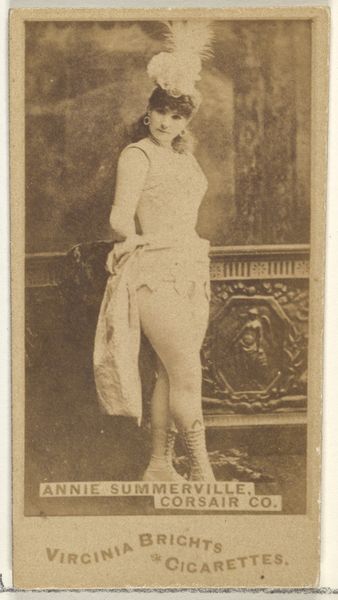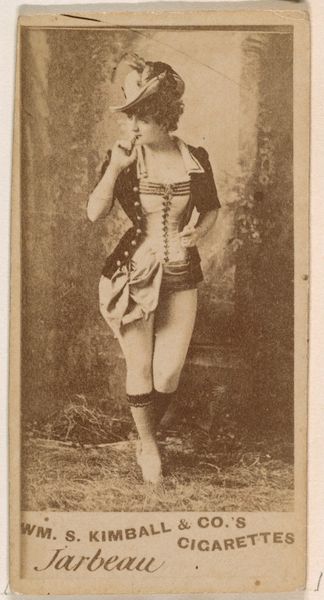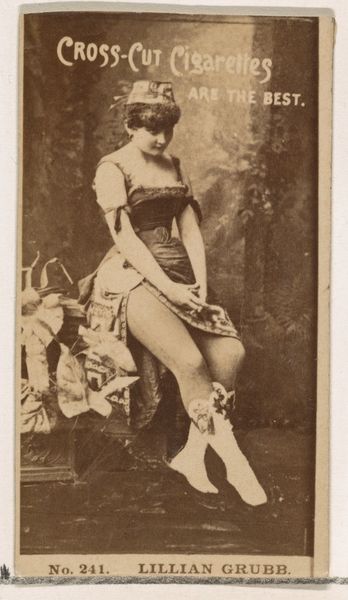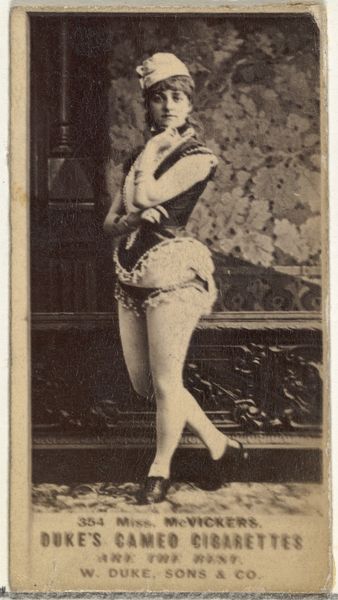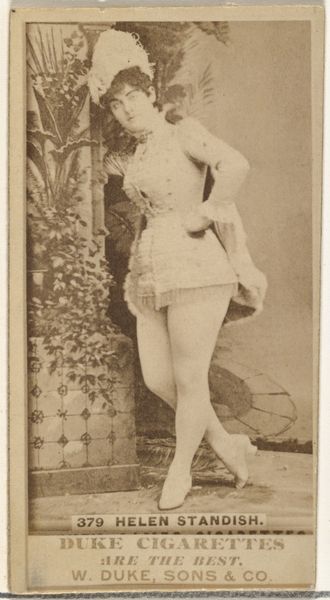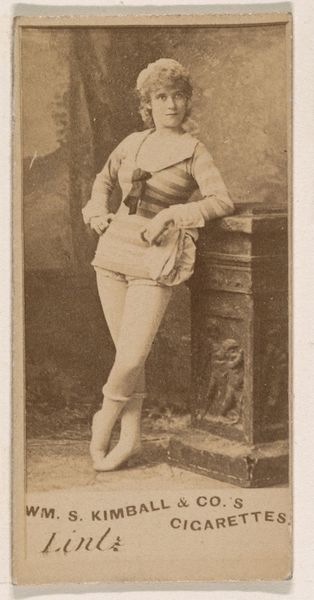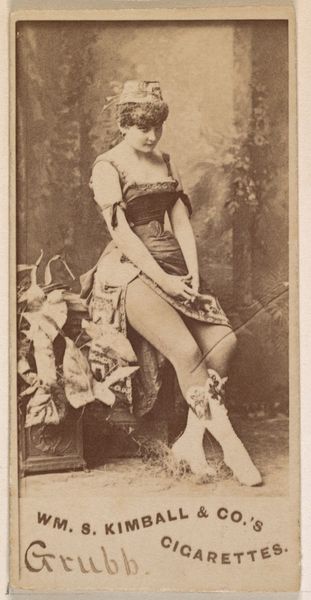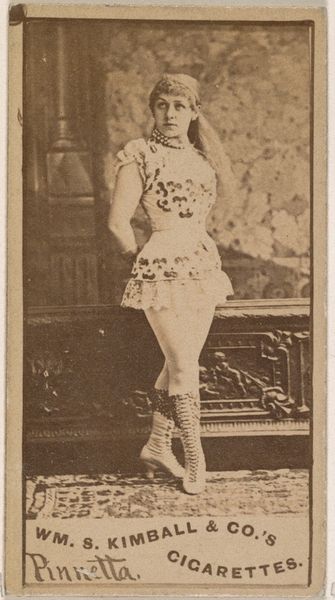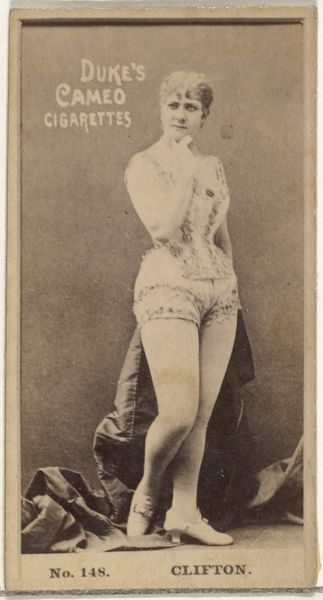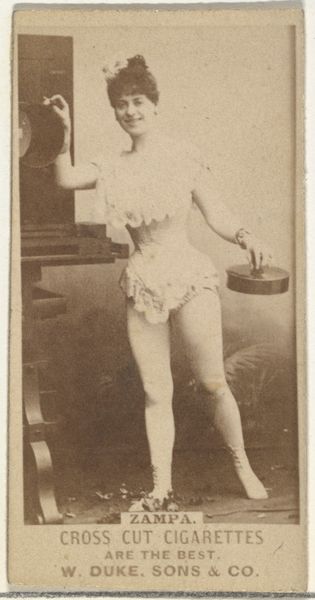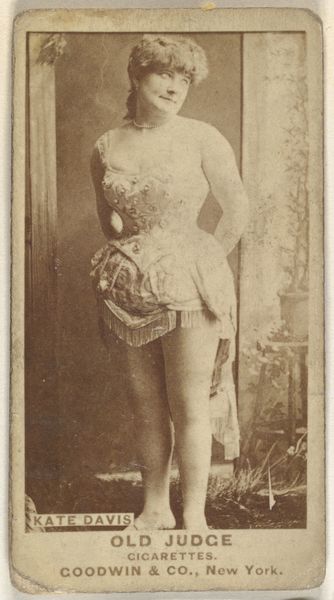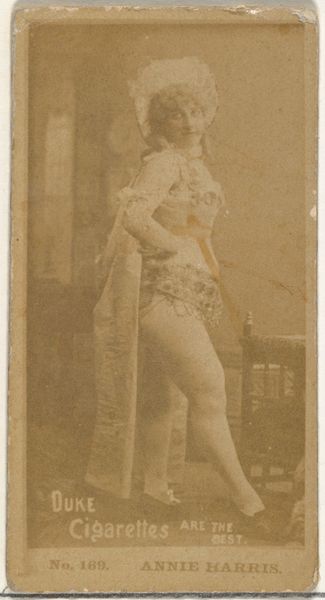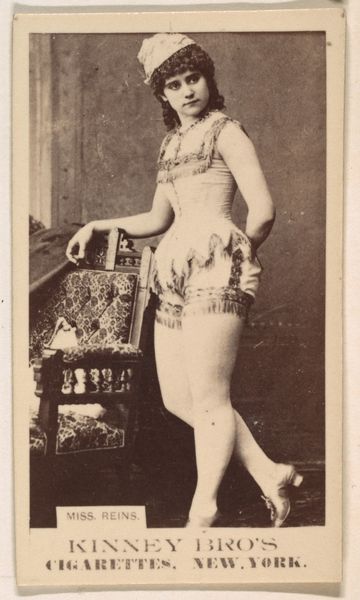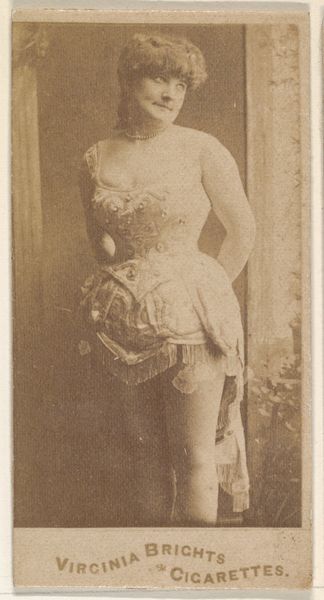
Isabelle Urquhart, from the Actresses series (N245) issued by Kinney Brothers to promote Sweet Caporal Cigarettes 1890
0:00
0:00
print, photography, collotype
#
portrait
#
toned paper
# print
#
figuration
#
photography
#
collotype
#
19th century
Dimensions: Sheet: 2 1/2 × 1 7/16 in. (6.4 × 3.7 cm)
Copyright: Public Domain
Curator: This captivating collotype print comes from Kinney Brothers Tobacco Company. Titled "Isabelle Urquhart, from the Actresses series," it dates back to around 1890. What catches your eye first? Editor: The sepia tone lends a ghostly, theatrical air, like a memory glimpsed through lace. She’s simultaneously present and distant. And the outfit is something else... very suggestive. Curator: Yes, consider the intended purpose! These cards, distributed with Sweet Caporal Cigarettes, used images of actresses to appeal to consumers, revealing the labor involved and the very act of capitalist consumption. This work, printed on toned paper, offers us insight into this early advertising technique. Editor: It’s amazing how commonplace portrait photography was becoming. Here’s Isabelle Urquhart frozen in time, and it wasn’t intended for a family album. The photographic reproduction flattens it a bit but does allow a mass audience to be exposed to the actress’ form and beauty. You almost see hints of academic art mixed with this emerging impressionistic blur and a dash of Japonisme. Curator: Exactly, those swirling Japonisme-like flourishes around the column and then those distinct lines around her calf-high boots are rather exciting! The use of collotype suggests a certain value, but it also hints at how easily mass-produced art like this was becoming. Do you think this medium affects our perception of Isabelle, or does it commodify her in any way? Editor: Absolutely! Her theatrical pose is undeniably tied to this consumable format. It is an alluring mix of art, commodity, and woman, that, if she had any say in it, probably paid very little if anything to the subject, Isabelle. Even her gaze feels performative. It's all so…manufactured. The details about the materials – paper, collotype inks, photographic print– grounds us in its materiality, a sharp counterpoint to the idealized image of Urquhart herself. Curator: Reflecting on this, I see a rather tragic juxtaposition of an artform being stripped of its higher calling. What was a portrait meant for other than this now? Editor: Yes, thinking through all of this is rather haunting. The materials reveal the story, the labor involved in its making, and it makes one wonder about Isabelle, the actress, and how she feels about her identity attached to all of this.
Comments
No comments
Be the first to comment and join the conversation on the ultimate creative platform.
